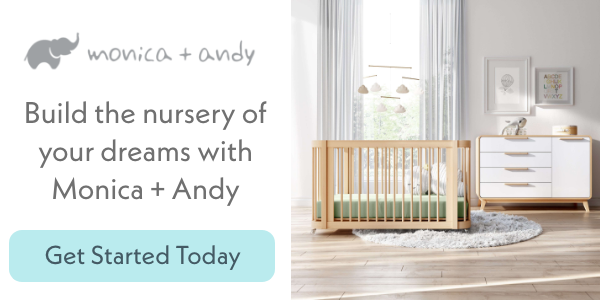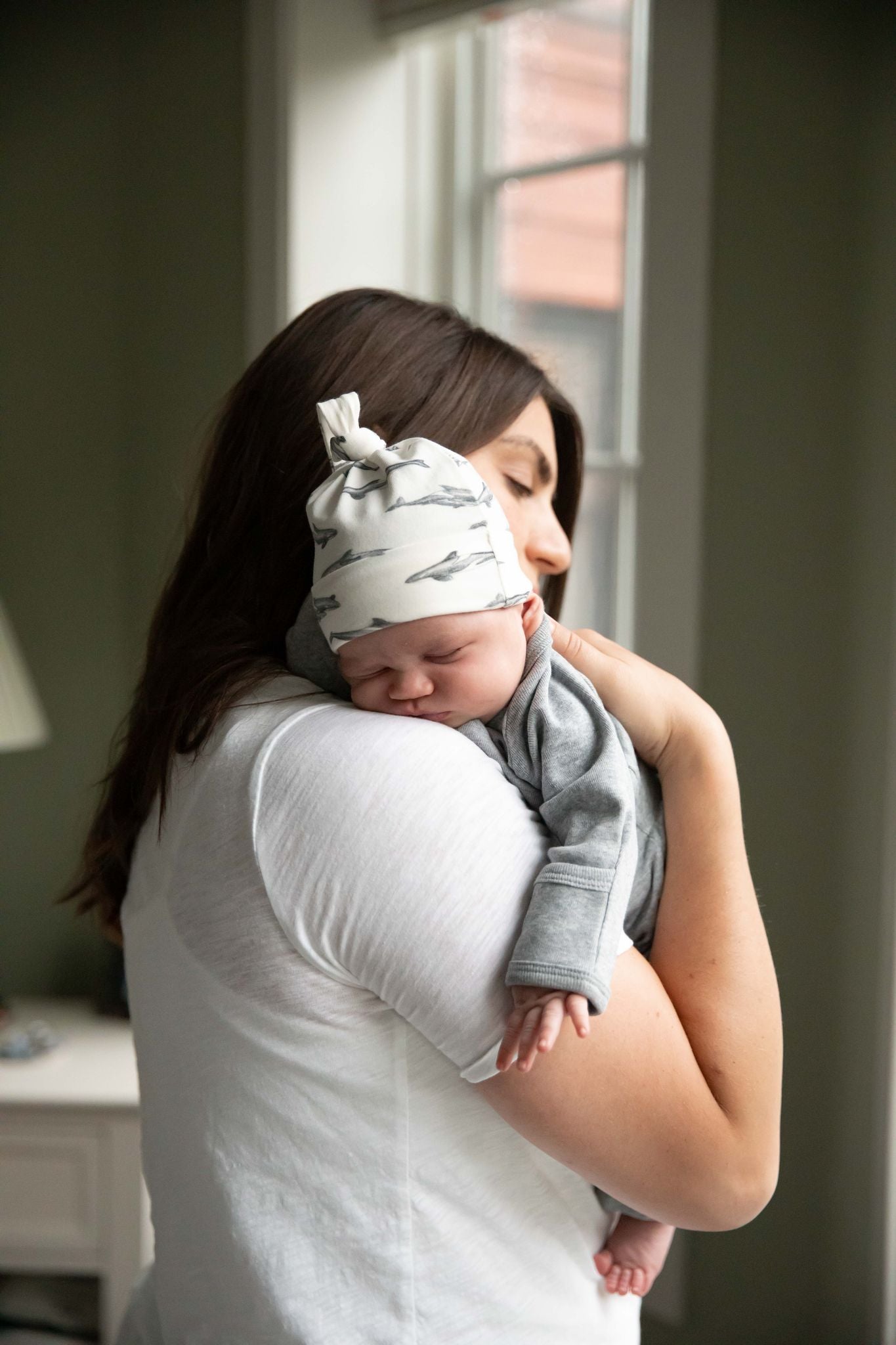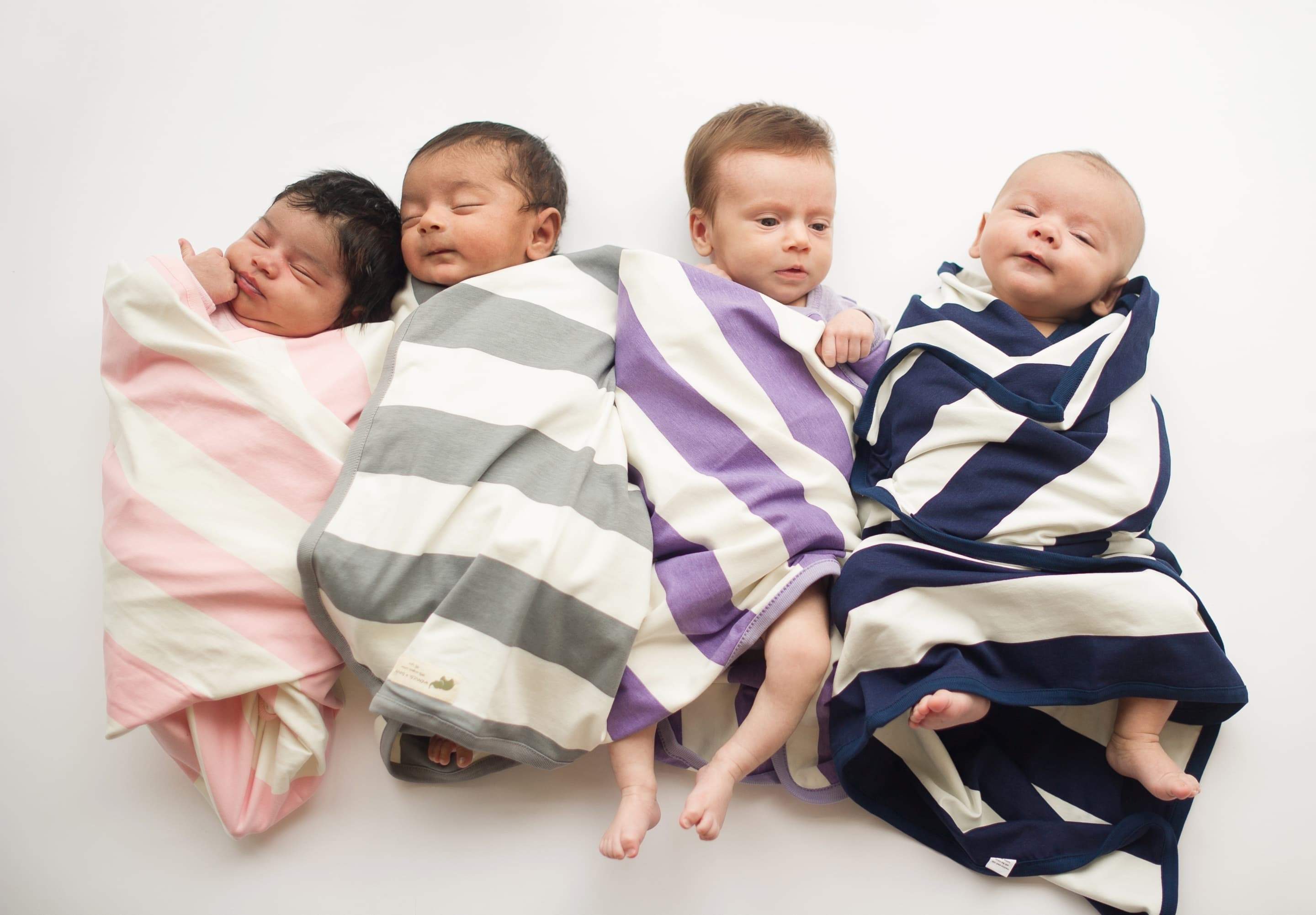How to Transition Your Baby to Crib: 6 Tips

Your smallest, cutest, and most boisterous roommate has been bunking in your room. Some nights have been more peaceful than others, but every night has been considered a win because you knew your roomie—and extremely snuggly baby—was safe and sound in their bassinet next to you.
That being said, it has been some time now of sharing your space with this tiny human, and they’re not quite as pint-sized as they were when you first brought them home. In fact, they’re looking bigger—or is their bassinet looking smaller?
Either way, if you’re debating whether it’s time to make the move to their own baby or toddler bed, we’ve got a handful of tips detailing how to transition your baby to a crib.
6 Tips to Transition Baby to Crib
Looking for tips on how to get your child to sleep in their own bed? Once you’ve made the decision to transition your baby to a crib, it’s time to learn how to make the move as smooth as possible for all parties involved. After all, a happy baby is a happy parent.
Here are our six tips for how to transition baby to crib smoothly:
#1 Create the Ideal Sleep Environment
Wondering when will your baby sleep through the night? Other than sleep training, creating the perfect sleep environment—or close to it—can make all the difference when moving a baby from one sleep space to another. Consider adding some of the following items to your baby nursery to create a sleep-friendly environment for your baby:
- Sound machine – Sound machines are an excellent way to block out noises that could keep your baby awake or rouse them once they’ve fallen asleep, such as traffic outside the nursery window or the sound of the television in a nearby room.
- Blackout curtains – During daytime naps, it’s helpful to have a completely dark room so that your little one can fall asleep easier and stay asleep longer.
- Appropriate sleep clothes – Aside from keeping your nursery at a comfortable temperature, you can help make sure your baby gets those Zzzs by dressing them in the appropriate amount of clothes—usually one more layer than what you have on. For instance, if it’s a chilly night and you’re wearing one layer, consider dressing your little one in baby pajamas along with a wearable sleep sack or bag.1
#2 Set Up a Safe Crib Space
A safe sleep space is one that ensures your little bundle is out of harm’s way every time you lay them in their bed. Here are a few ways you can ensure crib safety while promoting a good night sleep:
- Purchase a firm mattress – While many of us enjoy the comfort of a plush mattress that cocoons our bodies in its light embrace, it’s much safer for babies to sleep on a firm mattress. In fact, the American Academy of Pediatrics (AAP) recommends using a firm mattress as it decreases the likelihood of Sudden Infant Death Syndrome (SIDS).2
- Use a fitted sheet – Although you might be tempted to place a fuzzy blanket in your baby’s crib, this is a big no-no. Loose blankets and bedding pose a suffocation hazard if your baby becomes tangled in them during sleep. Instead, opt for a fitted cotton sheet that clings tightly to the mattress to ensure both safety and comfort.
- Declutter the crib – There is a time to put toys in the baby’s crib, such as when your little one is enjoying tummy time or having supervised playtime. During the baby’s sleep, however, it’s important to have a clutter-free zone. This means removing toys, blankets, crib bumpers, and any other soft items that could become a safety hazard.
#3 Familiarize Your Baby With the Nursery
An important step in transitioning a baby to a crib is making sure they’re familiar with the new environment. If the baby’s crib is in their nursery, try spending some time there every day for about a week or two leading up to the move.
You can also partake in some fun activities during these times so that your baby associates their new nursery with positive experiences and feels more comfortable once they begin sleeping in their crib. Activities can include:
- Tummy time Story time Snuggling Rocking
#4 Start with Naps or Bedtime
If you’re interested in taking this transition slowly, you can begin by letting your baby take their naps in the crib while continuing their overnight sleep in their bassinet. Consider sticking to this routine for about a week or two so that your baby can become more familiar with their new bed.
On the other hand, you might choose to start with bedtime in the crib, especially since babies are usually more tired when they go down for the night. This means your baby may fall asleep a little easier.
Regardless of which you choose, both options allow your baby to adjust to the crib at their own pace. Once your baby easily falls asleep in the crib, you can transition them to sleep there full time.
#5 Establish a Bedtime Routine
Creating a consistent bedtime routine is extremely useful as it helps babies learn when they’re nearing sleep. If you already have a bedtime routine that works for you, keep at it!
If not, here are some activities you can use to establish a routine that works best for your family:3
Nighttime feed- – A final feeding before bed can top off their tank and help them sleep longer before waking up for more food in the middle of the night.
- – A soothing bath is a great way to transition your baby from playtime to bedtime. You might choose to give them daily baths, or a bath every other day.
- – Whether or not you give them a daily bath, you can give your baby a daily relaxing massage with a soothing lotion. This can help put them into a more relaxed mood.
- – Try talking softly to your baby as you give them a fresh diaper and put on their pajamas for the night.
- – Another bonding activity that can help your baby wind down is reading a few books before bed. While they might not be too interested in whatever you’re reading at this stage, it’s a great habit to start at a young age and can be an excellent calming addition to any bedtime routine.
#6 Give Them a Minute to Cry
Once your little one is in their new sleep space, you may be tempted to run in at the first yelp or cry you hear—and that’s understandable! However, if you wait a few minutes before running to their rescue, they may be able to fall back asleep on their own. This is because babies often wake between sleep cycles and fuss for a minute before going back to sleep.
So, giving your little snoozer the time to figure sleep out on their own gets them one step closer to becoming an independent sleeper.
This technique also helps babies learn to self-soothe. And if your baby is able to rely on themselves to go back to sleep, they won’t expect you to do it by holding them, rocking them, or giving them a midnight snack.
What Age Should Baby Transition to Crib?
There is no clear-cut answer for what age babies should move from their bassinet to a crib because all babies grow at their own pace.
What is important is that you make the transition when it feels right to you and when it’s safest for your baby. Let’s break down each of these considerations.
When It Feels Right
The AAP suggests that your baby sleep in your bedroom for at least the first six months, and preferably, up to a year.4 However, you might realize after two months that you’re ready to transition them to their nursery because you wake up every time they make the slightest movement—and that’s OK!
On the flip side, you may choose to keep them in their bassinet until that one-year mark so that they can stay close to you for peace of mind. Choose whatever feels right for you and your family.
When It’s Safe for Your Baby
In terms of safety, it’s best to refer to your bassinet’s safety manual to determine when to transition your baby to a crib. In particular, you want to find answers to the following questions:
- How much weight can the bassinet hold? What’s the maximum height a baby can be while in the bassinet?
Once your baby has reached that capacity, it’s time to start planning the move.
In addition, if your little one is starting to roll over, it’s a sure sign that they’re ready to sleep in a crib. This is because cribs are sturdier, have more space, and can support a more mobile baby.
Sleep Soundly with Monica + Andy
No matter where you are in the transition process, at Monica + Andy, we’re here to help. Check out our other blogs for more valuable sleep tips, along with other baby insights and advice.
And if you’re about to start the process of transitioning your baby into a crib, browse our selection of modern nursery furniture to find everything you need to create a safe and snoozy sleep environment.
From ethically-made cribs that are free of harsh chemicals to dependable mattresses that fit seamlessly into those cribs, our wide selection of furniture and decor can ensure functionality, personality, and safety within your baby’s nursery.
Sources:
- Healthline. How to Dress Baby for Sleep. https://www.healthline.com/health/baby/how-to-dress-baby-for-sleep
- Medical News Today. How to Choose the Right Crib Mattress. https://www.medicalnewstoday.com/articles/best-crib-mattress
- What To Expect. How to Establish a Bedtime Routine for Your Baby. https://www.whattoexpect.com/first-year/sleep/baby-bedtime-routine
- American Academy of Pediatrics. Tips For Keeping Infants Safe During Sleep From the American Academy of Pediatrics. https://www.aap.org/en/news-room/news-releases/aap/2020/tips-for-keeping-infants-safe-during-sleep-from-the-american-academy-of-pediatrics














